12 Comics That Will Ring a Bell With Anyone Who’s Ever Fallen in Love

Flies are everywhere we go, literally. It is believed that flies originated in Asia, but these days they live everywhere people live, only excluding Antarctica, and — maybe — a couple of islands. Flies have traveled the oceans following humans, but they never go anywhere alone. In the wilderness and deserts, where humans are absent, you won’t find any flies.
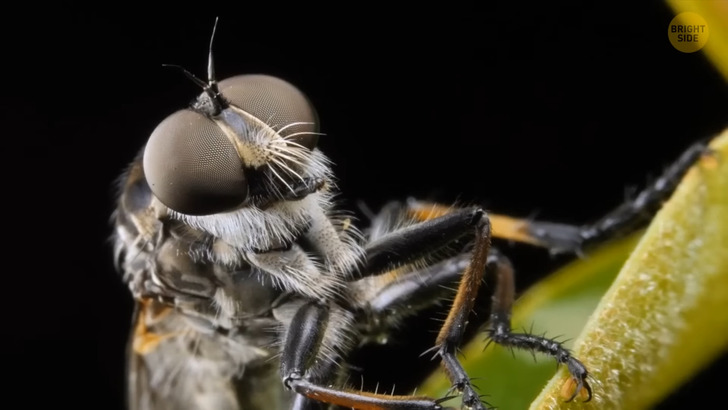
We know them well, but we all have that unanswered question about flies: why do flies rub their limbs? Turns out, they just clean them, it’s this simple. A fly has hair all over its body. The hairs on the limbs serve as detectors for flying, finding food, and doing whatever else the fly business is, they have to keep the limbs clear at all times. So, they just rub them every time they get a chance.
Their limbs are sensitive, and they serve more than one purpose. Apparently, the limbs have taste receptors, so the flies can taste with their feet. They can land on their potential meal and wander around it, giving it a good taste before consuming it.
Flies can’t chew, so they are on an all-liquid diet and drink their food. If the food they have picked as the next meal is solid, they have a special ritual to make it edible. A fly regurgitates digestive juices on their soon-to-be food, and those juices break it into the smallest pieces that can be drunk. Also, spitting out those juices frees up space in their stomachs for new food.
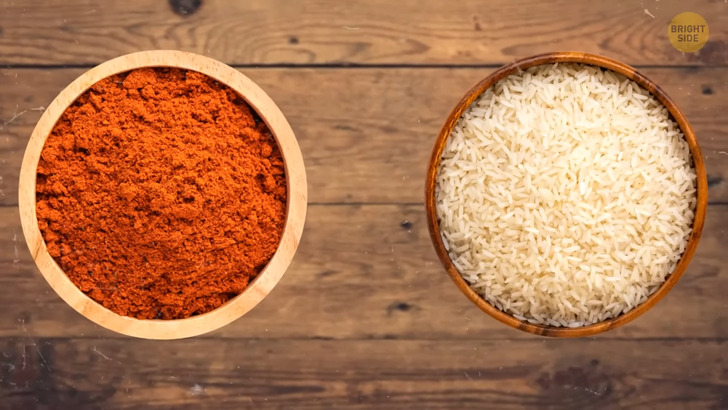
Quite often, flies sit on our food. They can appear harmless, but it’s not exactly true. First, remember that they spill out those juices onto your food, which is already gross enough. But there’s more. You have to keep in mind that flies land everywhere, and it’s not always flowers, but all the gross stuff as well.
And flies especially like that said gross stuff, like rotting foods, dumpsters, and even worse. So, their limbs collect all the gems and microbes from those places. When a fly lands on your food, it transfers those gems to your meal. Some of the microbes they transfer can even cause diseases, like cholera and typhoid.
There was even an experiment once made to demonstrate how it works. There were two bowls: one contained a red powder of some kind of spice, and the other bowl had white rice in it. Flies were let in, and they would migrate from the spice bowl to the rice bowl and back. Soon enough, rice got covered with red spice. Now replace harmless spice with something grosser, and rice with your dinner.
So, you should always cover your food to make sure some fly doesn’t take a walk on it and step and spit all over it. If you are eating, make sure you swap them away. But don’t worry if some annoying fly manages to sit on your sandwich for a second before you kick it out. No need to throw the sandwich out, if you acted fast, then you’re safe. Also, experts say that an average healthy human has a strong enough immune system to repel parasites.
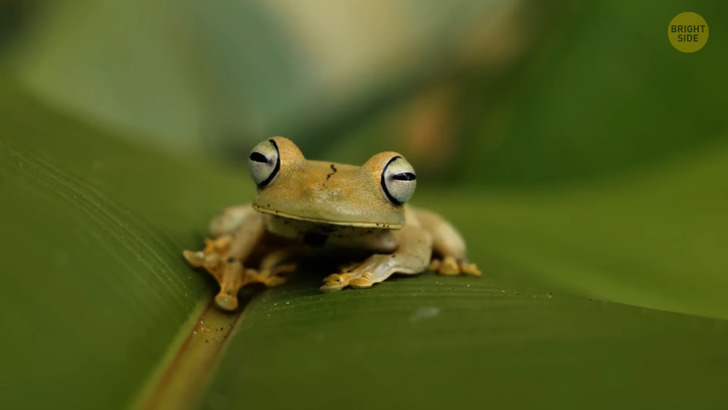
Even though flies are gross and annoying, bugging around and tickling you with their limbs, they do serve some good. They are responsible for pollinating flowers: they collect nectar from them, which gets stuck to the hair on their bodies, and then they pollinate the next flower when landing on it.
Also, if flies didn’t exist, our planet would be even dirtier — flies recycle some of the human waste. Flies are also an important part of the ecosystem since they’re food for birds, spiders, lizards, frogs, and many more. Without flies, they’d all go extinct.
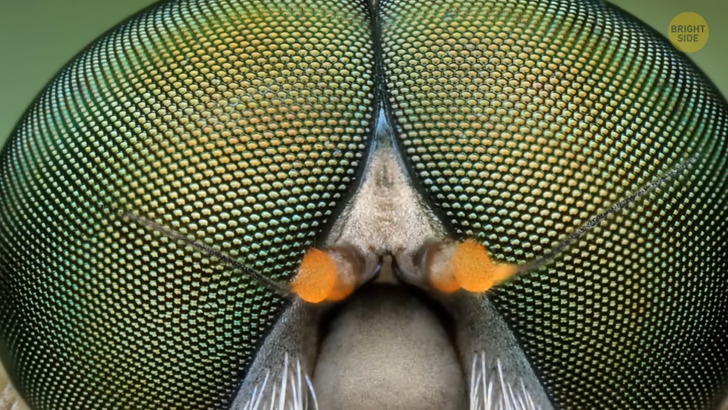
Apart from flies having the superpower of tasting with their feet, there are other interesting facts about them too. They can walk on both horizontal and vertical surfaces, and even upside down. They can do it because each one of a fly’s feet has two pads with tiny hair, and those hairs produce a glue-like substance that allows flies to have an excellent grip.
Flies have unique eyes, which have a large complex of 3,000 to 6,000 simpler eyes within each of the two compound eyes. A fly’s eyes don’t move, but its vision is nearly 360 degrees. They can see behind their back. So, wherever you are, a fly definitely sees you and every other danger with one or a few of their thousands of monitors. In addition to the two compound eyes, flies also have three simple eyes located on their foreheads, which serve as a compass and allow a fly to navigate.
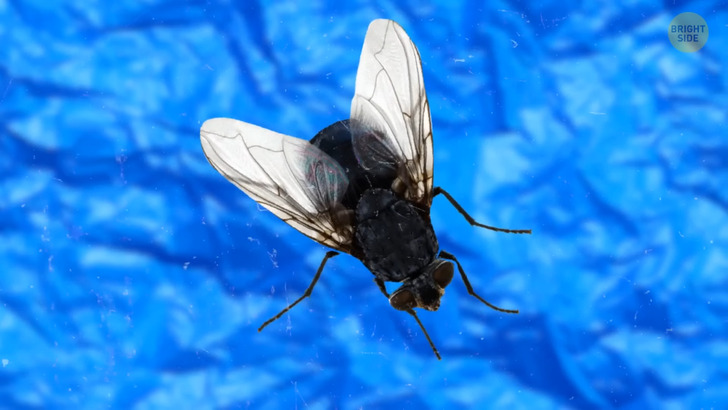
They also have an amazing reaction time. Ever wondered why is it so hard to swat a fly? Well, to a fly, we’re sloths. That’s because they see things in slow motion, compared to us. Species have different perceptions of speed.
The speed we see will be twice faster for a turtle. And it will be four times slower for a fly. Turn a video on 0.25x speed and imagine someone approaching you with this speed. Well, that’s how a fly sees you. So yes, it has enough time to escape.
A fly has just one set of wings. But in addition to the pair of wings, they also have so-called halters, which allow them to take off fast. Millions of years ago, halters were serving as a second pair of wings. Now they help to take off and also to balance in the air. If a fly loses one of the halters, it’ll start flying in circles. And if both of them go missing, it won’t be able to fly anymore at all.
Also, even though their wings beat up to 1,000 times per minute, they are very slow fliers, only reaching the speed of 4.5 miles per hour. If a fly lives in an urban area, with enough people and garbage around, it doesn’t fly far away from the place of residence, only having a territory of a bit over 3,200 feet. Rural flies are far more explorative, and they can fly away up to 7 miles at a time.
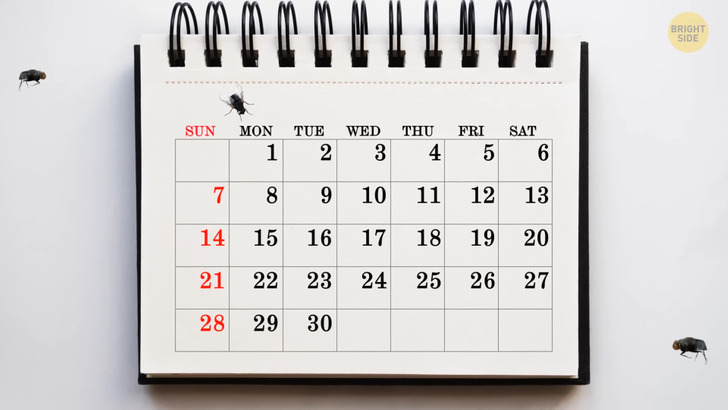
A fly doesn’t live long: its lifetime is just around 30 days. But during this time, they lay from 500 to 800 eggs each, on average. But it’s not 1,000 at once — it’s several goes throughout their life, with 75 to 100 eggs at once. The eggs hatch within 24 hours, and it takes a week in total for an egg to turn into a grown fly, and then the cycle continues. In colder climates, this process can take twice as long.
A timber fly is the biggest fly species, which lives in Central and South America. They can grow up to 3.15 inches. Also, flies have “beds”, or more like their favorite spot to stay and sleep. They find a comfy place — somewhere close to the source of food — and they come there to rest at night.
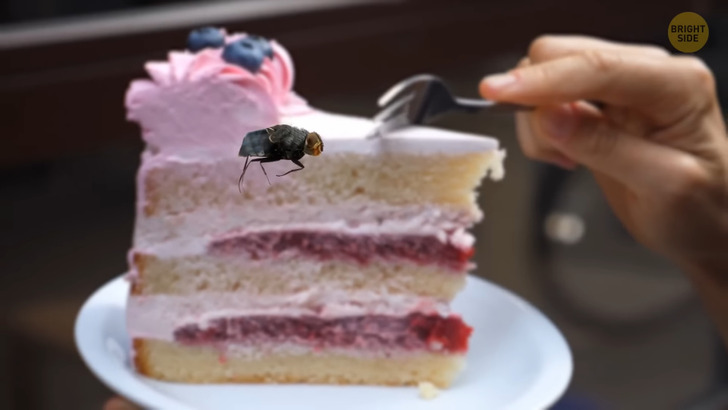
If you ever had your house flooded with flies, here are a few tips for you to reduce their population. First, it’s important to understand what they are attracted to. They are attracted to other flies, and even to the smell of flies living there. And flies have an amazing sense of smell. So, if you hosted even one fly, expect to get more guests. If you have any traces of flies, like fly specks, they will find you too. Make sure to wash your walls and surfaces.
Next, flies love garbage and rotting produce. They lay eggs in rotten food and meat. So, make sure to keep your food in the fridge, cover it, and keep the trash in tightly sealed containers. And, of course, take out the trash regularly.
Flies have a sweet tooth (or more like sweet foot, since they taste with their feet), and they love syrup and other sugary liquids. They are also fond of soda and vinegar. So, make sure to keep those stored, and always wipe after yourself if you spill something.
Lastly, they like to hide and live in dirty and leaky drains — they eat the bacteria from there. So, always clear your drains and repair any leaks right away. Also, it’ll help to seal all the cracks in your floor, ceiling, and walls, if you have any — that’s one of their ways to get into the house.











